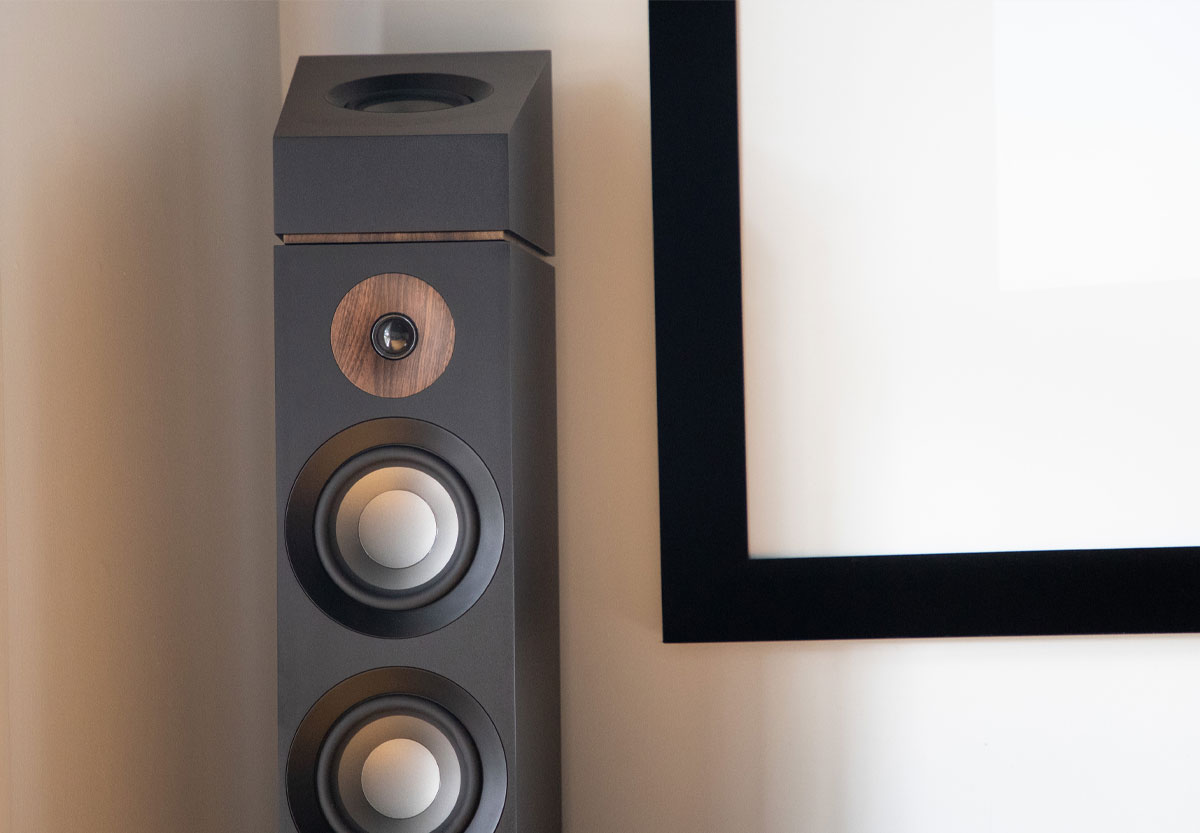Upfiring vs Ceiling Speakers - Whats better for ATMOS?
Upfiring vs Ceiling Speakers - Whats better for ATMOS?

Dolby Atmos is a technology that allows you to experience immersive 3D sound in your home theater. It adds height channels to the traditional surround sound setup, creating a dome of sound that envelops you from all directions. But how do you achieve this effect in your home? There are different ways to add Atmos speakers to your system, depending on your budget, room layout, and personal preference.
There are two ways of getting ATMOS. Either by using ceiling speakers or by using up-firing speakers.
Upfiring speakers are speakers that are placed on top of or near your existing front and/or rear speakers. They fire sound upward at an angle, bouncing it off the ceiling and down to your ears. This creates the illusion of sound coming from above you, without the need to install speakers in or on the ceiling. Upfiring speakers are also known as Atmos-enabled speakers, as they are specially designed and certified by Dolby to produce the Atmos effect.
Klipsch RP500SA II , Klipsch R-40SA , Jamo S8 ATM are perfect examples of up-firing speakers. Take a look at more Up-firing speakers here.
Ceiling speakers are speakers that are installed in or on the ceiling itself. They fire sound directly downward at your listening position, creating a more realistic and accurate representation of sound coming from above you. Ceiling speakers are also known as in-ceiling or on-ceiling speakers, depending on how they are mounted.
The Newport Audio DR65C, Wharfedale WCM-80, Klipsch PRO-180RPC are some of the best ceilings speakers. Take a look at more Ceiling speakers here.


So which option is better for your home theater? Here are some factors to consider:
- Sound quality: Ceiling speakers generally offer better sound quality than up-firing speakers, as they do not rely on ceiling reflections that can vary depending on the shape, size, and material of your ceiling. Ceiling speakers also have more directivity and less interference from other sounds in the room, resulting in clearer and more precise sound localization.
Upfiring speakers can still produce a convincing Atmos effect, but they may not be as effective in rooms with height, sloped, uneven ceilings, etc
- Installation: Upfiring speakers are easier to install than ceiling speakers, as they do not require any drilling or wiring in the ceiling. You simply place them on top of or near your existing speakers, connect them to your receiver, and adjust their angle and level according to Dolby’s guidelines. Ceiling speakers require more work and skill to install, as you need to cut holes in the ceiling, run wires through the walls or attic, mount the speakers securely, and paint over them if necessary. You also need to make sure that your ceiling can support the weight and size of the speakers, and that there are no obstacles such as pipes or wires behind it.
- Cost: Speakers have come a long way and both these kinds of speakers are available at a wide range of costs starting from roughly from about $200 for ceiling speakers and about $500 for up-firing speakers.
- Aesthetics: Upfiring speakers are more visible than ceiling speakers, as they sit on top of or near your existing speakers. This may not be a problem if you like the look of them or if they match your decor, but it may also clutter your space or draw attention away from your screen. Ceiling speakers are more discreet than up-firing speakers, as they blend in with the ceiling and do not take up any floor space. However, they may also create holes or marks on your ceiling that may be hard to conceal or repair if you ever decide to remove them.
In conclusion, both up-firing speakers and ceiling speakers can provide a great Atmos experience in your home theater, but they have different advantages and disadvantages that you need to weigh carefully before making a decision. Ultimately, it depends on your personal preference, budget, room layout, and sound expectations. The best way to find out which option works best for you is to try them out yourself in our demo rooms set up in our flagship store.












